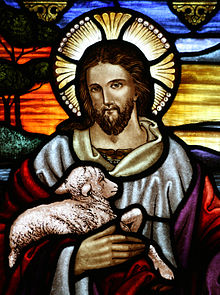 |
| Italian Propaganda Poster |
Religious scholars working for the church have pointed to Jesus’s ‘darker complexion’, and ‘evenings spent drinking with male friends after work’ as potential clues to his Korean origins. He was also known to have mixed with prostitutes and brought an apparently dead man back to life - a feat often accomplished by Koreans in the streets of Seoul after a heavy night’s drinking.
Jesus met with an unfortunate end after the Catholic Church of the era, which at that time only numbered fourteen official members, allowed him to be taken into custody by the occupying military regime, which tried and executed him for being a liberal. Ironically, had the political roles been reversed, it appears likely from numerous later examples that the Catholic Church would have hidden and protected Jesus, rather than giving him up. Despite his execution, Jesus was said to have returned from the dead to claim eternal life, although the Church has consistently distanced itself from this accusation of zombieism despite the symbolic eating of human flesh - and the vampire-like drinking of blood - which is now incorporated into the 'Holy Communion' part of Catholic Mass.
The claims that Jesus is still alive may be boosted by the large number of people in Korea who claim to have “found Jesus” while living in the country. 57-year-old Kim, a law professor from Seoul International University says that while direct evidence may still be lacking “the large number of eyewitness reports seem to prove beyond a reasonable doubt that Jesus has at least been living in Korea for some time.”
Since many people believe it would be unlikely for Jesus to be living in Korea unless he had family in the country, this is also offered as proof of his Korean heritage. Professor Kim added “Korea’s tough visa restrictions for people from the Middle East make it likely that Jesus must be in Korea on a family visa, because otherwise it isn’t clear what visa he would be eligible for.” Two years ago rumors swept Naver forums that Jesus was in fact teaching English in a backstreet Daegu hagwon, but after crowds flocked to the location it transpired to be a foreigner, known locally as Brian, who hadn’t shaved for a month.
Unfortunately very few photographs remain from Biblical Times, as the newspaper has long since ceased publication, but intriguingly some images are still held by its descendant religious publication, The Korea Times, which finally revealed two of them publicly in 2008. One image shows the birth of Jesus, in which his mother Mary is clearly wearing a hanbok, while the second image shows Jesus – who by this time is clearly Korean in appearance - being baptized. On the back of the first image the faded words 'Jesus of Namyangju' is written in Hangeul, using a type of Chinese ink unique to Korea at the time. The release of the images was controversial because it was feared Christianity in Korea would plummet in popularity if it were seen as being domestically originated rather than foreign and aspirational. Since then, more Biblical-era photographs have been released, all clearly showing Jesus to be living in Korea, probably in the vicinity of what is now the Gangnam district of the capital. "Jesus talked a lot about the eternal Seoul" said one of the Korean Biblical scholars.
Staff at The Catholic Corporation S.r.l., a limited liability company located in Rome which trades under the name The Catholic Church and is simply known as The Church when it is trying to frighten people, say the images were clearly Photoshopped in medieval times and should be ignored. The Corporation has consistently depicted Jesus as Italian for several hundred years as it is believed to be reluctant to move to Seoul, partly because of the weather but mostly because of the food. Followers of the 13th Apostle, Rufus, who was gradually edited out of early editions of the Bible due to his African ethnicity, have fought a long-running battle with The Church claiming that Jesus was also black, but researchers from the newly incorporated First Church of Christ the Corean in Seoul say that Rufus may have been generalizing because Jesus’s Korean skin was darker than that of an Italian.
Related Links
Paintings Depict Jesus Christ in Korea
Birth of Jesus in Korea
Jesus is KOREAN---- The Real Story of Jesus (Video)
The Gospel According to Rufus
Disclaimer: Please note the links above are generated automatically by our software and may not always be directly related to the news article.